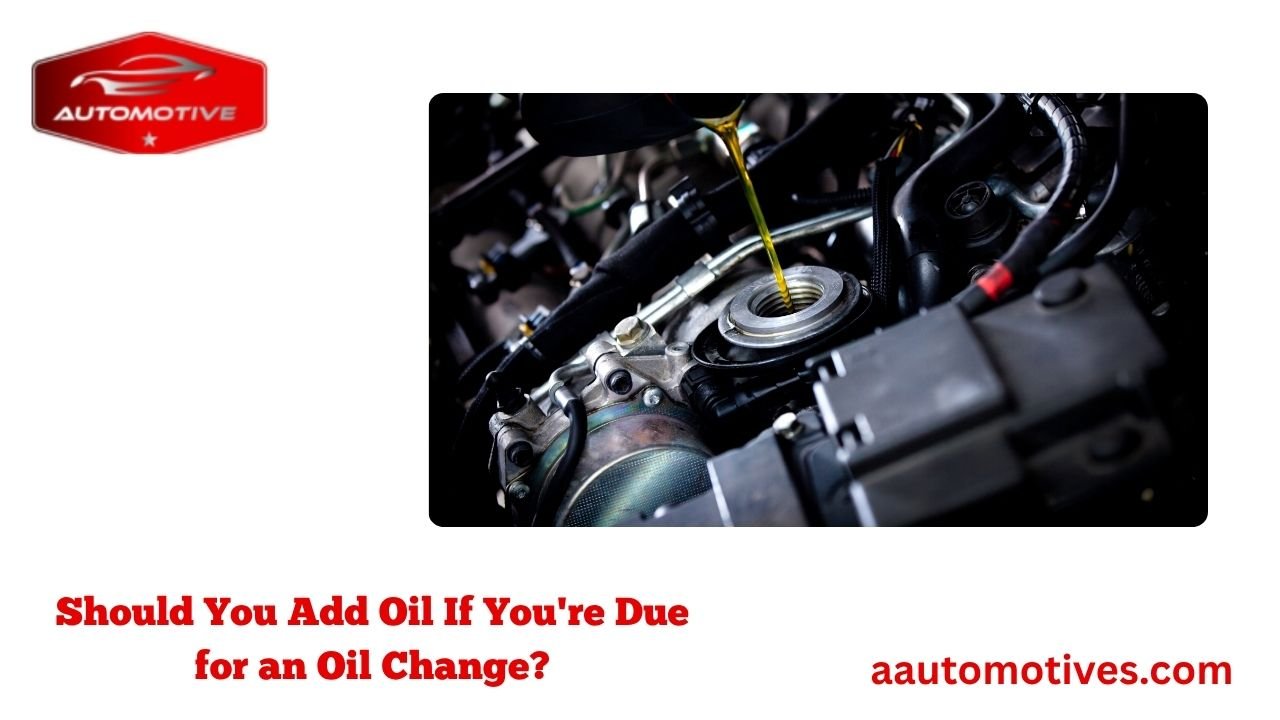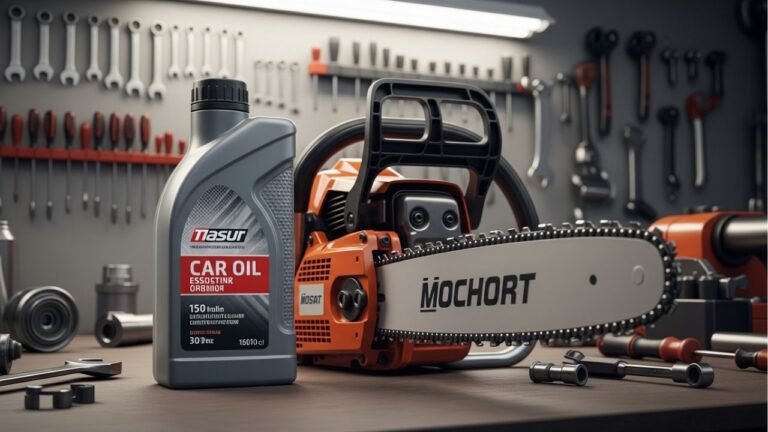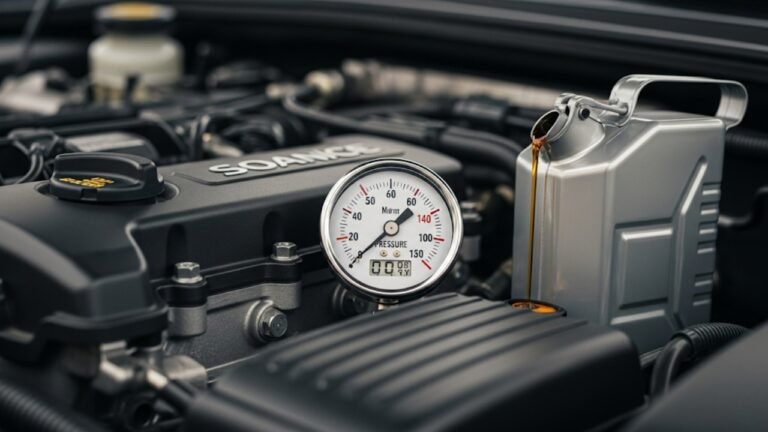Should You Add Oil If You’re Due for an Oil Change?

We’ve all been there. You’re on your way to work, sipping your coffee, and suddenly that little oil light flashes on your dashboard. Panic sets in. You remember your last oil change was… a while ago. So the question starts swirling in your mind: Can you put oil in your car if you need an oil change?
It seems like a simple yes-or-no, right? But the truth is, there’s a bit more nuance. Think of your car’s engine like your own body. Adding oil when it’s needed is like drinking water when you’re dehydrated—it helps for now, but maybe you’re ignoring a bigger issue. So let’s break it down, friend-to-friend, and go deeper into what this all means, what you should do, and when it’s okay to top off versus when it’s time to hit the garage.
Understanding What Engine Oil Really Does

Every time you drive, that oil collects dirt, debris, and microscopic metal shavings. Over time, the oil gets thick and dirty, kind of like how a sponge gets gross after too much use. When this happens, it can’t protect your engine as well. That’s where oil changes come in—they swap out the old, gunky stuff for fresh, smooth oil.
But sometimes, the oil level gets low even before it’s due for a change. Maybe you’ve got a little leak. Maybe your engine burns oil faster than normal. That’s when you might wonder: Is it okay to just add more oil on top?
Yes, You Can Add Oil—But There’s a Catch
So here’s the short answer to our big question: Yes, you can put oil in your car if you need an oil change—but that’s not the same as replacing the oil. Adding oil is like putting a band-aid on a bigger wound. It’ll stop things from getting worse—for a while—but it won’t actually solve the problem.
Let’s say your engine is a pot of soup. Over time, that soup starts getting thick and crusty. You can pour in more broth to loosen it up, but the old ingredients are still there. That’s what it’s like to top off your oil instead of changing it. You’re just mixing clean oil with dirty oil.
If you’re in a pinch—like you’re low on oil and miles from a mechanic—adding oil is 100% better than running dry. Driving with too little oil can seriously damage your engine, and that’s not a bill anyone wants. But don’t treat topping off your oil as a long-term solution.
Why Too Little Oil Is Way Worse Than Old Oil
Let’s be real—your engine won’t explode just because the oil is a month overdue. But if you’re low on oil, now that’s a different story. Running with low oil is like trying to run a marathon with no water in your system. You might go for a while, but eventually, something will break down.
Low oil can cause:
-
Friction between metal parts, which leads to overheating
-
Engine knocking, a scary noise that means your engine is starving
-
Complete engine seizure, aka the worst-case scenario
That’s why—even if you need an oil change—it’s still better to add oil than to keep driving on low levels. Just remember, this is a stopgap, not a solution.
Signs You’re Low on Oil or Need a Change
Knowing when to add oil or get a full change can be confusing, especially if you’re not a car person. Here are some common signs to look out for:
-
Oil light on the dashboard – Usually the first clue
-
Engine sounds louder than usual – Oil quiets things down; no oil = more noise
-
Burning smell – This could mean the oil is overheating or leaking
-
Dirty oil on the dipstick – If it’s dark and gritty, it’s time for a change
-
Poor performance – Sluggish acceleration or reduced mileage
Here’s a simple table to compare adding oil vs. getting a full oil change:
| Situation | Add Oil? | Full Change? | Notes |
|---|---|---|---|
| Low oil level but not dirty | ✅ | ❌ | Safe to add oil short-term |
| Oil is dark, gritty, smells burnt | ❌ | ✅ | Needs a full change immediately |
| Just got an oil change recently | ✅ | ❌ | Top off if needed |
| Oil change overdue + low level | ✅ | ✅ | Add now, schedule change soon |
| Dashboard light blinking | ✅ | ✅ | Add oil first, then get diagnostics if needed |
How to Check Your Oil (Yes, You Can Do This!)
Let me tell you something: checking your oil isn’t rocket science. I used to be intimidated too—until I tried it. Here’s how you do it:
-
Turn off the car and wait a few minutes so the oil settles.
-
Open the hood and look for the dipstick (usually a yellow or orange ring).
-
Pull it out, wipe it clean with a paper towel, then reinsert it.
-
Pull it out again and check where the oil level hits.
-
If it’s below the “low” mark, you need to add some oil.
If the oil is thick, dark, or smells burnt, then even if the level is okay, you’re probably due for a change. Simple, right?
What Happens If You Keep Topping Off Without Changing?
This is where things get tricky. Can you put oil in your car if you need an oil change repeatedly and just skip the change? Technically, yes. But it’s not something I’d recommend. Here’s what might happen:
-
The old oil keeps building up contaminants, which can clog your oil filter.
-
The engine doesn’t cool properly, increasing the risk of overheating.
-
You might void your warranty if your service history is spotty.
I once knew a guy who did this for almost a year—kept adding oil without changing it. Eventually, his engine started making a noise that sounded like a dying lawnmower. Turns out, sludge had built up everywhere. He ended up spending way more fixing it than a few oil changes would’ve cost.
Long-Term Damage: What Happens When You Ignore Oil Changes
Let me level with you—neglecting oil changes can cost you thousands. It might not happen overnight, but trust me, the damage is real. Skipping oil changes while only adding new oil is like putting fresh water into a muddy bucket. The clean stuff helps, but that gunk is still swirling around.
Over time, the oil turns into sludge. This sludge clogs the passageways in your engine, suffocating it from the inside. It’s like your car is trying to breathe through a straw filled with peanut butter. The result? Loss of power, overheating, and in the worst-case scenario—complete engine failure.
Once, my cousin’s car seized up on a freeway. He’d skipped two oil changes and just kept topping it off. The engine was so damaged, the mechanic called it “cooked.” A $45 oil change turned into a $3,200 repair. Lesson learned, the hard way.
Why Fresh Oil Really Matters
So why is fresh oil such a big deal? Isn’t oil just oil? Actually, no. Old oil becomes acidic. It stops lubricating and starts causing corrosion. That’s like using sandpaper instead of butter in your sandwich—nasty, right?
Here’s what fresh oil actually does:
-
Reduces engine wear: Prevents grinding and metal-on-metal contact
-
Cleans the engine: Removes tiny debris and micro-particles
-
Improves fuel economy: Less friction means better mileage
-
Protects against overheating: Oil draws heat away from moving parts
-
Extends engine life: This is the big one—routine oil changes = long-term savings
So when you ask, can you put oil in your car if you need an oil change, the better question is: Why not just get the change done and save your engine the stress?
The Best Time to Add Oil (And When You Shouldn’t)
Timing matters. If you check your dipstick and the oil is low—but it’s still clean—then go ahead and top it off. But if you’re noticing you’re adding oil more often than usual, something’s off. Your engine might be burning oil or you might have a leak.
Here’s when it’s okay to add oil:
-
On a long trip and the level dips low
-
You’re between changes and it’s just a little under
-
You recently changed oil but the level isn’t full
Here’s when you should not just add oil:
-
Oil is dark, thick, or smells burnt
-
You’ve added oil more than twice since your last change
-
You don’t remember the last time you changed it (seriously—just do it)
Real Talk: What Mechanics Say
I’ve asked a few mechanics over the years: Can you put oil in your car if you need an oil change? Every single one gave me a version of this answer: “Sure, but it won’t fix what’s wrong.”
They’ve seen it all—engines full of sludge, filters clogged to the point of bursting, pistons worn out from lack of proper lubrication. Most issues could have been prevented with regular oil changes. These pros recommend changing oil every 3,000 to 5,000 miles for conventional oil, and 7,500 to 10,000 miles for synthetic, depending on your car.
Here’s a mechanic-approved checklist:
-
Check your oil monthly
-
Top off only if the oil is clean
-
Stick to a schedule—set reminders if you have to
-
Don’t trust your car’s “oil life” percentage blindly—know your driving habits
Common Myths Debunked
Let’s tackle some of the myths I hear all the time from friends, family, and even strangers at gas stations.
Myth 1: You can skip oil changes if you keep adding oil
Truth: You’re not replacing the contaminated oil, just diluting it. That doesn’t count as maintenance.
Myth 2: Synthetic oil never needs changing
Truth: Synthetic lasts longer, but it still breaks down over time. Nothing lasts forever.
Myth 3: My dashboard will always tell me when I need oil
Truth: Not all cars have smart sensors. Sometimes by the time the light comes on, damage is already done.
Myth 4: I can wait longer because I don’t drive much
Truth: Oil breaks down with time, not just mileage. Even if you drive less, you still need changes every 6–12 months.
Emotional Cost: Peace of Mind Isn’t Priceless
There’s also a hidden emotional cost. Ever driven with that nagging feeling that your engine might give out any minute? That stressful, pit-in-your-stomach anxiety isn’t worth it. Peace of mind is one of the most underrated benefits of proper car care.
When you stay on top of oil changes, you drive differently. You feel confident. You know your car is reliable. That’s not just about performance—it’s about freedom. No surprise breakdowns, no calling tow trucks in the rain, no awkward calls to your boss saying you’ll be late (again).
Culture and Cars: A Love Story Built on Maintenance
In many cultures, a car is more than just transportation—it’s a status symbol, a rite of passage, a reflection of identity. Whether it’s that first beat-up sedan you got in college or the dream car you finally bought after years of hard work, your car matters. It’s part of your life story.
Taking care of your car means respecting the journey it takes you on. Oil changes aren’t just chores—they’re acts of love. Think of it like brushing your teeth or taking your vitamins. Small habits, big payoff.
Bullet Summary: Quick Takeaways You’ll Thank Me For
Let’s recap this whole thing in plain language:
-
✅ Yes, you can add oil if you’re low—but don’t skip the oil change.
-
Think of topping off as temporary relief, not a fix.
-
⚠️ Old oil = dirty oil = damaged engine over time.
-
️ Change your oil on schedule, even if you don’t drive much.
-
Skipping oil changes can cost thousands later on.
-
A well-oiled engine is a happy engine—and a safer car.
Conclusion: The Real Answer Lies in Balance
To wrap it all up—can you put oil in your car if you need an oil change? Yes. Should you rely on that alone? Absolutely not.
Think of your car like your health. You wouldn’t just drink water when you’re sick and skip the doctor, right? Topping off your oil helps short-term, but real care comes from maintenance. Do it for your wallet, your safety, and your peace of mind.
Taking five minutes to check your oil or 30 minutes to get it changed might just save you hundreds of hours and dollars down the road. You’ve got the power to keep your car running like new—and it all starts with one simple habit.





